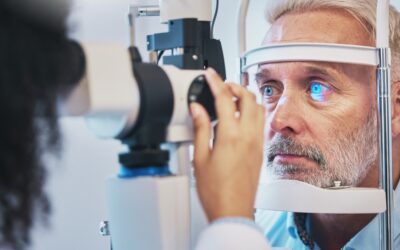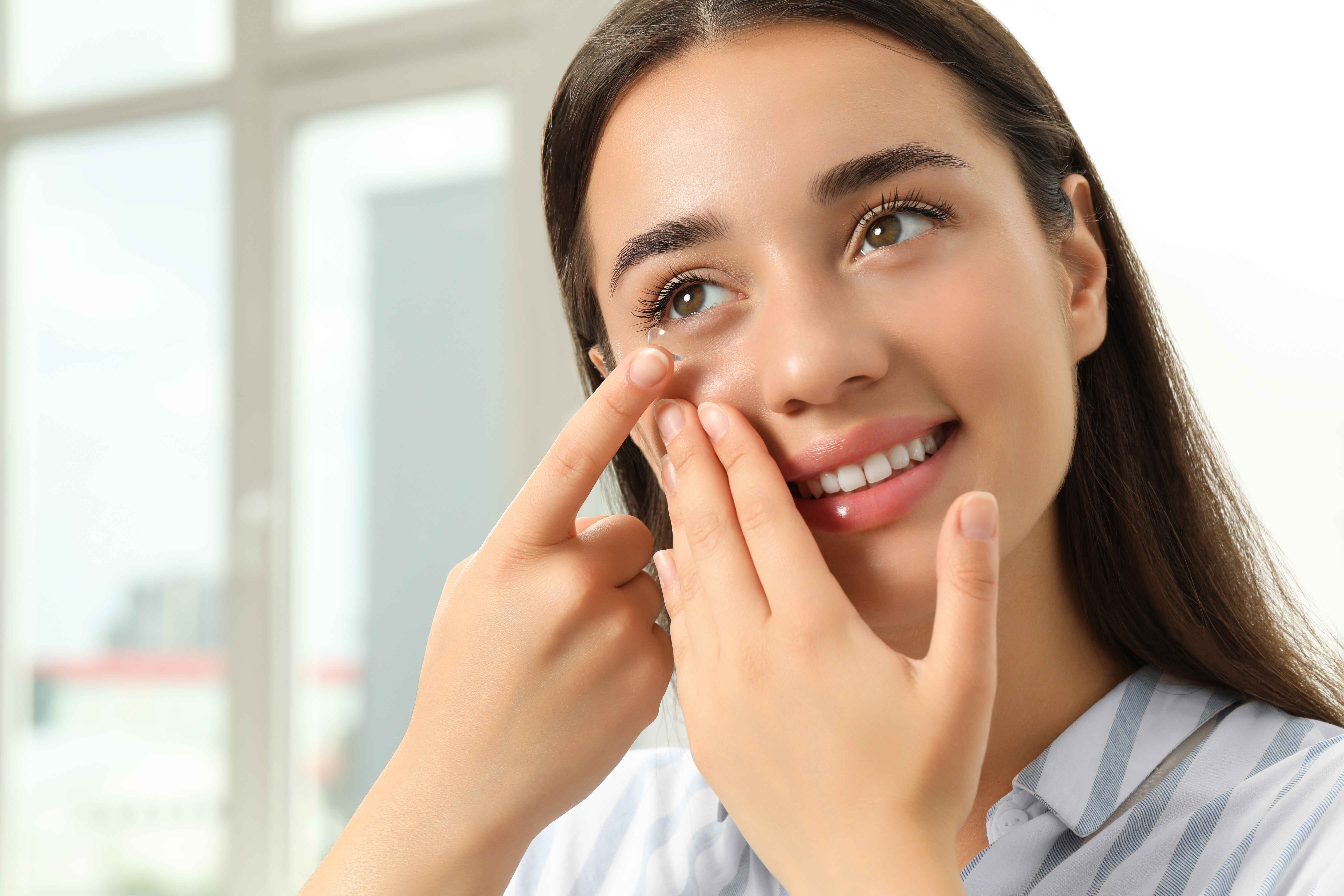Table of Contents
Contact lenses are a popular alternative to eyeglasses for those with refractive vision errors. In the following blog post, we’ll explore the benefits of wearing contacts, how contact lenses work, and the different types of lenses available.
Understanding Contact Lenses
According to the CDC, 45 million Americans wear contact lenses. Compared to eyeglasses, contacts can feel more natural, allow for better peripheral vision, and look more discreet.
In fact, contact lenses are increasingly popular among children and teens, who report higher levels of satisfaction and self-esteem when wearing contacts. Contact lenses are also an excellent option for those who play sports or have a job that makes wearing traditional eyeglasses difficult, for instance, due to eye protection requirements.
How Do Contact Lenses Work?
A majority of patients with vision problems suffer from a refractive error. Refractive errors appear when the eye cannot get light rays to focus on the retina. Contact lenses and eyeglasses work by bending light rays with convex or concave surfaces. With the right degree of correction, contacts and glasses adjust where the focal point falls and cause it to align with the retina, resulting in clear vision.
You might wonder how contact lenses differ from the way eyeglasses correct refractive errors. Contacts and eyeglasses use the same mechanism of action to bend light rays, but there is a major difference in where the corrective layer sits in relation to the eye.
While eyeglasses typically sit within half an inch to an inch away from the cornea, contact lenses sit directly on the cornea. Bending light directly on the cornea results in more natural vision and minimizes the depth perception distortion of wearing traditional eyeglasses.
Besides, contact lenses can move with your eye, allowing you to bring objects into focus more naturally without having to turn your head. Some patients also prefer not to have frames blocking their peripheral vision.
Types of Vision Corrections with Contact Lenses
Now that you know more about how contact lenses work, it’s time to delve into the different types of contact lenses and the conditions they address.
Myopia or Nearsightedness
With myopia, light focuses before the retina, making far-away objects hard to see. Concave single-vision contacts are a possible treatment option since they adjust the focal point for distance vision.
Hyperopia or Farsightedness
Hyperopia makes nearby objects blurry because light rays focus behind the retina. Convex contact lenses can address this issue by bringing the focal point closer.
Astigmatism
Astigmatism is characterized by an anomaly in the eye’s curvature that creates multiple focus points. Toric or cylindrical contacts can address this issue by correcting vision along the horizontal or vertical axis.
Innovations
Contact lens manufacturers are always innovating and looking for ways to create better-performing products. Recent contact lens innovations include scleral lenses that can rest on the sclera to protect and hydrate the cornea, a great option for treating corneal issues like dry eye syndrome.
You can also find orthokeratology lenses, a type of lens that temporarily reshapes the cornea at night and eliminates the need to wear contacts or glasses during the day.
Are Contact Lenses a Good Option for You?
Contact lenses can address many refractive errors while being more convenient and feeling more natural than traditional eyeglasses.
An optometrist can explain how contact lenses work and determine your suitability for wearing contacts. Before you schedule an appointment, learn more about prepaid vision plans with negotiated savings offered by VCD of Oklahoma and how these plans can make contact fittings, prescriptions, and other services more affordable. Contact VCD to learn more!





















































